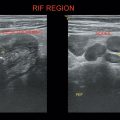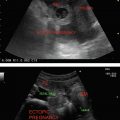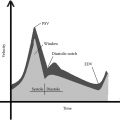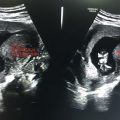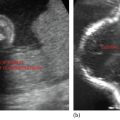Peritoneum and Retroperitoneum
List of retroperitoneal organs
1. Kidneys, ureters
2. Uterus, fallopian tubes, prostate
3. Pancreas
4. Aorta, IVC
5. Esophagus (thoracic), duodenum (Second, third, and fourth)
6. Ascending and descending colon, rectum (middle one-third)
7. Adrenal glands
List of intraperitoneal organs
1. Liver, spleen
2. Stomach, duodenum (first part)
3. Jejunum, ileum
4. Cecum, appendix
5. Transverse and sigmoid colon, rectum (upper one-third)
6. Ovaries
Urinary bladder, lower one-third rectum, and distal ureters are infra/subperitoneal in nature.
Small bowel mesentery is a specialized peritoneal fold extending from the second lumbar vertebra to the right iliac fossa containing blood vessels, nerves, lymph nodes, and fat. It connects jejunum and ileum to posterior abdominal wall and is difficult to appreciate if ascites is not present (Table 12.1).
Omentum: Specialized peritoneal folds.
Lesser omentum: Connects the lesser curvature of the stomach and proximal duodenum with the liver.
Table 12.1 Illustrating various peritoneal cavity spaces
Subphrenic space | Bilateral, inferior to diaphragm |
Subhepatic space | Inferior to liver; anterior and posterior Posterior subhepatic space is called Morrison’s space |
Lesser sac (Omental bursa) | Between stomach and pancreas |
Paracolic gutters | Bilateral; along ascending and descending colon. Right paracolic gutter is larger than left, communicates freely with the right subphrenic space Phrenicocolic ligament partially limits the connection between left paracolic gutter and left subphrenic space |
Pelvic | Females—b/w uterus and rectum; also known as rectouterine pouch or POD (Pouch of Douglas) Males—recto vesical pouch; b/w rectum and urinary bladder |
Anterior cul-de-sac | Urinary bladder and uterus |
Greater omentum: Descends from the greater curvature of the stomach.
Foramen of Winslow (Epiploic foramen): Passage between greater and lesser sac.
1. Posterior pararenal space
2. Anterior pararenal space
3. Perirenal space
Stay updated, free articles. Join our Telegram channel

Full access? Get Clinical Tree


